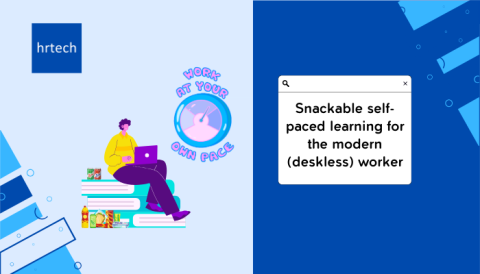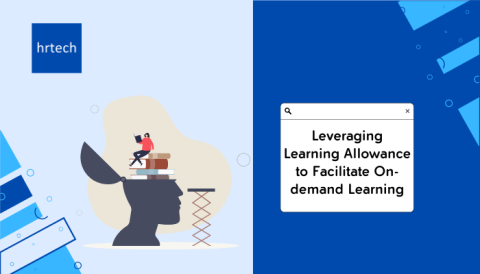Introduction
Modern talent strategies demand more than isolated performance reviews or one-off training programs—they require a connected ecosystem that continuously supports employee growth and prepares them for future roles.
To truly build a high-performing and future-ready workforce, HR leaders need tools that bring performance management, learning and development (L&D), and succession planning into one unified framework.
That’s where HRiQ by IQ Dynamics steps in. This comprehensive talent development platform empowers HR teams to identify high-potential talent, address underperformance proactively, and align individual growth with long-term business goals—all driven by configurable metrics tailored to each organization’s unique needs. With the ability to map these metrics across performance, learning, and progression, HRiQ brings the full talent pipeline to life—seamlessly and strategically
With data-driven insights and tightly integrated modules, HRiQ transforms talent potential into measurable progress.
Why Integration Matters in Talent Development?
Talent development isn’t just about checking boxes—it’s about creating a continuous, meaningful journey for employees. However, when performance, learning, and succession planning operate in silos, organizations miss out on valuable insights and growth opportunities.
Integration bridges these gaps, enabling HR leaders to see the full picture, respond in real time, and make smarter, data-driven decisions that fuel both individual and organizational success. With HRiQ’s intuitive dashboard—configurable by department or designed for a bird’s-eye view—leaders at every level can access insights aligned with their specific objectives, from unit heads to top management.
The Pitfall of Siloed Talent Systems
Many organizations still rely on disparate tools for performance reviews, learning management, and succession planning. These siloed systems create several challenges:
- Data fragmentation: Performance data is stored in one system, learning records in another, and succession pipelines in spreadsheets or separate platforms. This lack of cohesion makes it difficult to build a comprehensive view of talent.
- Missed opportunities: High performers may go unnoticed due to isolated reviews or delayed feedback. Similarly, employees needing development support may fall through the cracks without timely learning interventions.
- Inconsistent Employee Journeys: When systems don’t talk to each other, employees experience disjointed growth paths that fail to engage or motivate.
Why Integration Matters in Talent Development
- Siloed systems create blind spots: When performance reviews, learning initiatives, and succession planning are managed separately, key insights can fall through the cracks—leading to missed development opportunities and fragmented talent strategies.
- Disconnected data limits growth: Without integrated systems, high-potential employees might be overlooked for leadership development, and underperformers may not receive timely support through learning interventions.
- An integrated ecosystem enables smarter decision-making: When data flows seamlessly across performance, learning, and succession modules, HR leaders and managers can make informed, strategic decisions based on real-time insights.
- Aligns employee development with business goals: Integrated systems ensure performance appraisals drive relevant learning plans and prepare individuals for succession pipelines—connecting daily actions with long-term organizational outcomes.
- Improves the employee experience: Employees benefit from consistent feedback loops, personalized learning journeys, and clearer growth paths—all powered by connected talent processes.
- Drives organizational agility: By having a unified view of talent readiness and capability, organizations can respond faster to skill gaps, internal mobility needs, and leadership transitions.
The Case for Integration
By integrating performance, learning, and succession planning into a single ecosystem, organizations gain a 360-degree view of talent. This approach brings several key benefits:
- Strategic decision-making: Managers can quickly identify skill gaps, assign targeted development plans, and track readiness for future roles—all within the same system.
- Speed and agility: Integration enables real-time data flows and automated triggers (e.g., assigning learning after a performance review), speeding up development cycles.
- Consistency across the employee lifecycle: Employees benefit from clearly defined growth paths that evolve in alignment with their performance and potential.
With HRiQ, integration isn’t just a technical feature—it’s a strategic enabler for future-ready workforce planning.
IQ Dynamics’ Talent Development System: A Deep Dive
HRiQ is designed to help HR teams go beyond admin tasks and truly drive strategic outcomes. Here’s how its integrated talent development system delivers on that promise across key modules:
1. Performance Appraisal
The Performance Appraisal module allows organizations to conduct dynamic, multi-dimensional evaluations that go far beyond traditional annual reviews.
Key features include:
- Customizable evaluation criteria aligned with roles, departments, and organizational goals.
- 360-degree feedback collection from peers, managers, and direct reports.
- Goal setting and alignment that connects individual performance to team and business outcomes.
- Seamless Integration Across the Talent Suite
What makes HRiQ stand out is its ability to operate as a truly unified system. Performance data doesn’t exist in isolation, it flows directly into learning, succession, and planning modules. HRiQ also integrates easily with existing systems, ensuring organizations can run everything seamlessly within one suite. This allows for real-time insights, reduced manual effort, and smarter, interconnected talent decisions across every HR function.
2. Learning Management System (LMS)
The LMS empowers organizations to offer personalized learning journeys tailored to individual growth needs and organizational priorities.
Notable capabilities include:
- Course catalog management for both internal and external training.
- Progress tracking and certifications to measure outcomes and competencies.
- Automated learning path assignment based on appraisal results or succession goals.
- Bi-directional data flow, where learning progress and certifications feed back into the system to support future appraisals and inform succession planning decisions.
With performance data flowing into the LMS, employees automatically receive learning plans that close skill gaps or prepare them for future roles.
3. Succession Planning
HRiQ’s succession module equips HR teams to proactively build leadership pipelines by identifying key roles and mapping high-potential successors.
The system enables:
- Role-based succession mapping, defining critical roles and associated competencies.
- Readiness tracking, monitoring whether identified successors are prepared to step up.
- Bench strength analysis to visualize organizational coverage and highlight areas of risk.
Because it draws from both performance and learning data, succession planning becomes evidence-based and future-focused.
4. 9-Grid Matrix
A cornerstone of strategic talent planning, the 9-grid matrix within HRiQ visually maps employees based on performance vs. potential.
It enables:
- Data-backed segmentation, categorizing employees as high performers, future leaders, consistent contributors, or those needing support.
- Tailored interventions, such as accelerated development for high-potentials or performance improvement plans for underperformers.
- Informed calibration sessions, allowing leadership teams to align on talent classification and action plans.
Explore HRiQ’s full talent development capabilities
How It Works in the Real World?
Let’s walk through a typical talent journey using HRiQ’s connected system:
Step 1: Identifying High-Potential Employees
During a quarterly performance appraisal cycle, a mid-level employee is evaluated using the 9-grid matrix. Their strong results and high engagement place them in the “High Performance, High Potential” quadrant. This immediately flags them as a candidate for succession.
Step 2: Assigning Targeted Learning Paths
The system automatically recommends a leadership development program aligned with the competencies required for future management roles. The employee is enrolled in a blended learning path comprising e-learning modules, mentoring sessions, and project-based learning.
Step 3: Tracking and Adjusting Progress
HR and managers track the employee’s learning progress through the LMS dashboard. Performance is reviewed at regular intervals, and feedback from mentoring sessions is incorporated into their profile. Adjustments are made to learning content as needed based on evolving performance data.
Step 4: Readiness for Succession
Six months later, the employee completes their development plan and is re-evaluated. Their updated 9-grid position, along with validated skills and experience, qualifies them as succession-ready for a managerial role.
The Outcome
This proactive and structured approach leads to:
- Improved engagement through personalized development opportunities.
- Higher retention of top talent who see a clear path forward.
- Stronger leadership pipelines built on real data, not assumptions.
This isn’t theory—it’s the kind of strategic talent lifecycle HRiQ supports every day.
Lead the Shift to Strategic Talent Development
The workforce is evolving—and so should your talent development strategy. Traditional, siloed HR systems are no longer sufficient to support the growth, agility, and leadership readiness today’s organizations demand.
Your roadmap to integrated, strategic talent development starts here.
With HRiQ, you’re not just managing talent—you’re actively nurturing it through connected performance, learning, and succession strategies. Whether you want to accelerate leadership development, reduce turnover, or strengthen your talent bench, HRiQ gives you the tools and data to do it right.
See how a fully integrated talent development strategy can unlock your future leaders.
Explore the HRiQ Talent Development System
Ready to Turn Potential Into Progress?
Don’t let your future leaders slip through the cracks of disconnected systems. With HRiQ’s fully integrated talent development platform, you can align performance, learning, and succession into one smart, strategic flow.
Unlock growth. Empower your people. Build tomorrow’s leaders—today.
Let HRiQ be your strategic partner in building a resilient, capable, and future-ready workforce.





